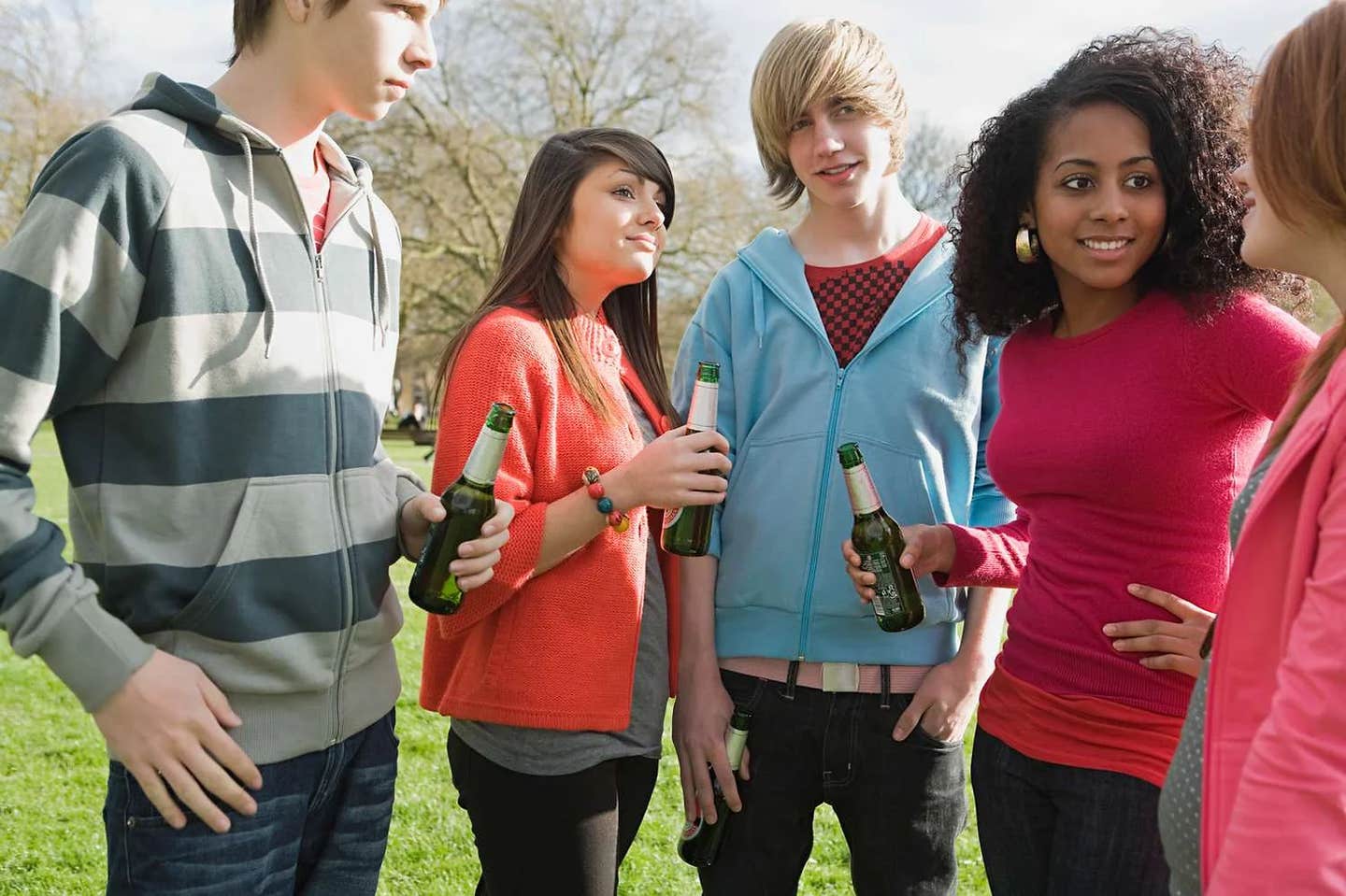There’s been a dramatic drop in youth drinking over the last 20 years – here’s why
Differences in socialization among high school students may explain the significant decline in youth drinking over the past 20 year

Public health researcher Dr Jude Ball has compared attitudes to drinking among high school students in 1999–2001 to those in 2022.(CREDIT: Getty Images)
Differences in socialization among high school students may explain the significant decline in youth drinking over the past 20 years, according to a University of Otago, Wellington study.
Public health researcher Dr. Jude Ball, alongside Dr. Michaela Pettie and Loleseti Poasa, compared the drinking attitudes of high school students from 1999–2001 to those in 2022. They interviewed 64 students aged 14 to 17 from a co-ed school in Wellington in 2022, comparing their views with 41 Christchurch students aged 14–17 who participated in the Adolescent Friendships and Lifestyles Project from 1999–2001.
Their findings, published in the Asia Pacific journal Drug and Alcohol Review, reveal striking contrasts. Dr. Ball notes that over half of high school students from 20 years ago regularly drank and attended parties by Year 10. By Year 12, all had experienced drinking with peers, with many getting drunk at least occasionally, and some on a weekly basis.
In stark contrast, only one Year 10 student interviewed in 2022 reported drinking alcohol socially. Most had only had a few sips, if any. Among Years 11 and 12 students, about three-quarters abstained or drank moderately on rare occasions, often with family instead of friends.
Dr. Ball suggests that the shift in attitudes is multifaceted, with social media and online activities replacing the drinking and partying of the past. “Parties used to expand social circles and facilitate romantic connections. Now, adolescents can do this online, without leaving home,” she explains.
Not drinking has become more socially acceptable among today's teens. Twenty years ago, early adopters of alcohol were at the top of the social hierarchy, with non-drinking 'nerds' at the bottom. By Year 12, drinking was almost a mandatory aspect of teen socializing, especially for boys. Now, non-drinking is the norm for many adolescents. While alcohol is part of social life for some groups, many teens lead active social lives without it.
Dr. Ball attributes this change to a greater acceptance of diversity and respect for personal choices, which has lessened peer pressure to drink. A Year 11 student remarked, “It feels like there aren’t such strict unwritten rules for being a teenager. The internet has made liking different things more prevalent, and people are more understanding that everyone’s different.”
Some students view drinking or a party lifestyle as detrimental to their goals and a waste of time and money. One student stated, “I’ve got better things to do than party. I’m looking out for my future here. I can’t have this distraction.”
Additionally, there is a stronger awareness of alcohol-related risks among today's teens. Many mentioned long-term health risks such as cancer, liver damage, and the impact of alcohol on brain development. Concerns about addiction are also more prevalent. “Today’s youth are more likely to regard drinking as a high-risk activity with few benefits, whereas in the past, not drinking was socially risky,” Dr. Ball notes.
It remains unclear whether these changes reflect a unique generation that will remain 'dry' throughout their lives or one that is simply delaying alcohol use until adulthood. “New Zealand evidence suggests binge drinking remains prevalent in early adulthood. Despite declining alcohol use among high school students, binge drinking in older adolescents is still higher here than in countries like Australia and the US,” Dr. Ball warns.
This study highlights the need for continued public health efforts to address alcohol harm among young people. Policy changes aimed at reducing alcohol-related risks remain crucial.
Note: Materials provided above by the The Brighter Side of News. Content may be edited for style and length.
Like these kind of feel good stories? Get the Brighter Side of News' newsletter.
Rebecca Shavit
Science & Technology Journalist | Innovation Storyteller
Based in Los Angeles, Rebecca Shavit is a dedicated science and technology journalist who writes for The Brighter Side of News, an online publication committed to highlighting positive and transformative stories from around the world. With a passion for uncovering groundbreaking discoveries and innovations, she brings to light the scientific advancements shaping a better future. Her reporting spans a wide range of topics, from cutting-edge medical breakthroughs and artificial intelligence to green technology and space exploration. With a keen ability to translate complex concepts into engaging and accessible stories, she makes science and innovation relatable to a broad audience.



